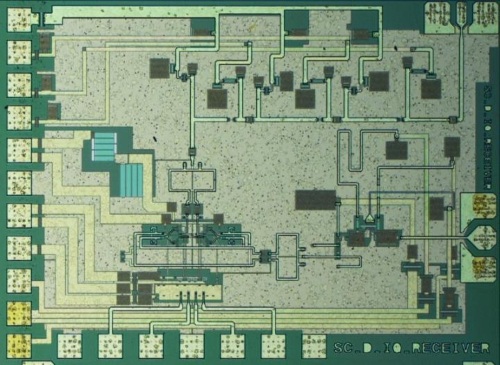Researchers at Chalmers University have designed a new type of microwave circuit that is twice as fast as the previous world record for data transmission.
Even more exciting than the new mark is the fact that they were able to achieve this mark using less parts, smaller components, and better materials.

It’s common knowledge that with the significant increase in smart device uses we’re seeing nowadays, there’s more pressure than ever before for providers to produce efficient methods of transmitting enormous amounts of data through the air with enough speed so as to not frustrate their customer base.
The solution that’s been kicked around most recently is to use higher frequencies than today; specifically 100 gigahertz and higher. It is believed that doing this would give providers access to a larger band of empty frequencies which, in turn, would enable a much higher data rate.

And now it’s believed that this group out of Sweden are the first to achieve success in this regard.
“We have designed circuits for signals at 140 gigahertz, where we have a large bandwidth. In laboratory testing, we have achieved a transmission rate of 40-gigabit data per second, which is twice as fast as the previous world record at a comparable frequency,” says Herbert Zirath, who is a professor in high speed electronics at Chalmers (worth noting is that he’s also employed by Ericsson Research on a part-time basis).
Zirath specifically points to the advancements made in terms of semiconductor material, as it has allowed manufacturers to design circuits capable of transmitting high frequency signals at much higher power levels. The circuits, made of indium phosphide, are so small that a microscope is needed in order to distinguish between the details.

140-GHz transmitter chip, containing an I-Q modulator, a three-stage amplifier, and a x3 frequency multiplier for the local oscillator. It measures 1.6 x 1.2 mm2 and was designed by Sona Carpenter, Herbert Zirath, and Mingquan Bao.
In their announcement, the Chalmers groups said that some of the applications where quicker wireless data transmission might prove useful include major cultural and sports events where high-resolution live films need to be transmitted to screens without delay or the hassle of having to deal with long cables. Also, communication between and within the large computer rooms that store our files when we send them to the client will benefit from this approach as download and upload speeds will appear to be near instantaneous.
“This is a very exciting area to be involved in, since the heavily increasing amount of data demands new solutions all the time. The fact that an increasing number of people are watching films wirelessly is the primary reason underlying the need for quicker transmission today.”
As a result of the record the group achieved, the researchers have been invited to talk about their results with a few other experts at the upcoming Compound Semiconductor Integrated Circuits Symposium.
For updates, visit the Chalmers University website.
Via: AlphaGalileo
Advertisement
Learn more about Electronic Products Magazine





